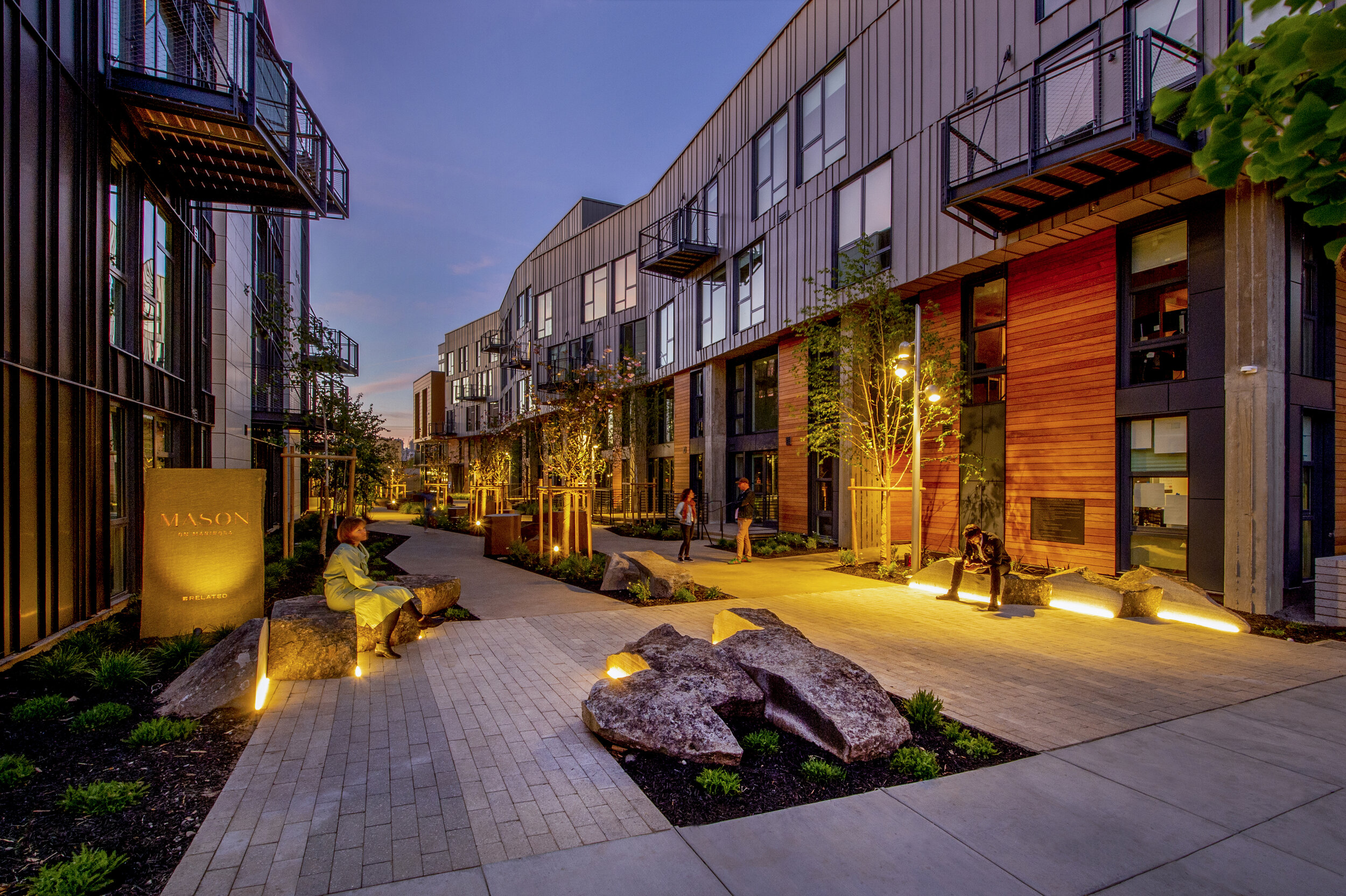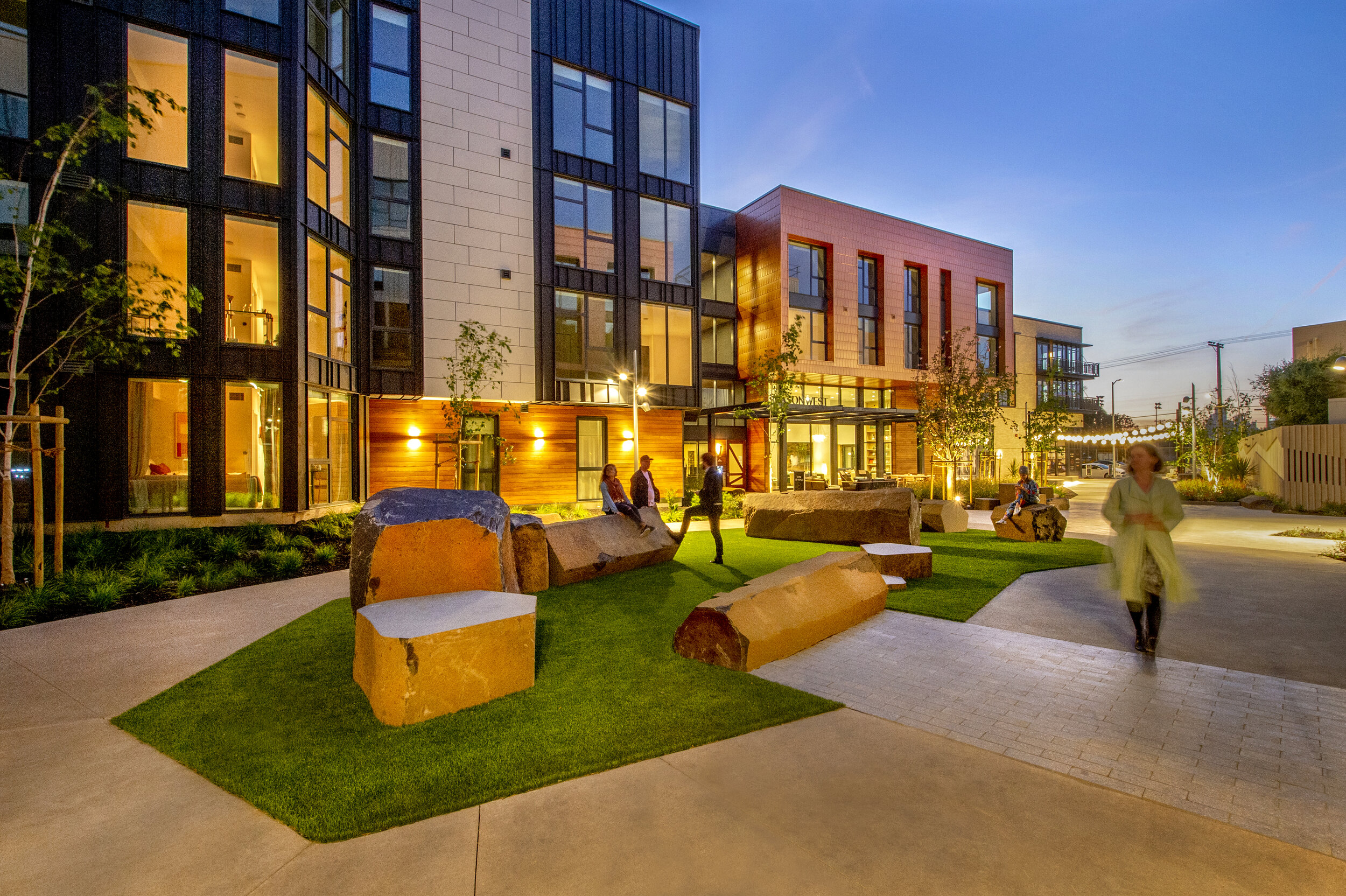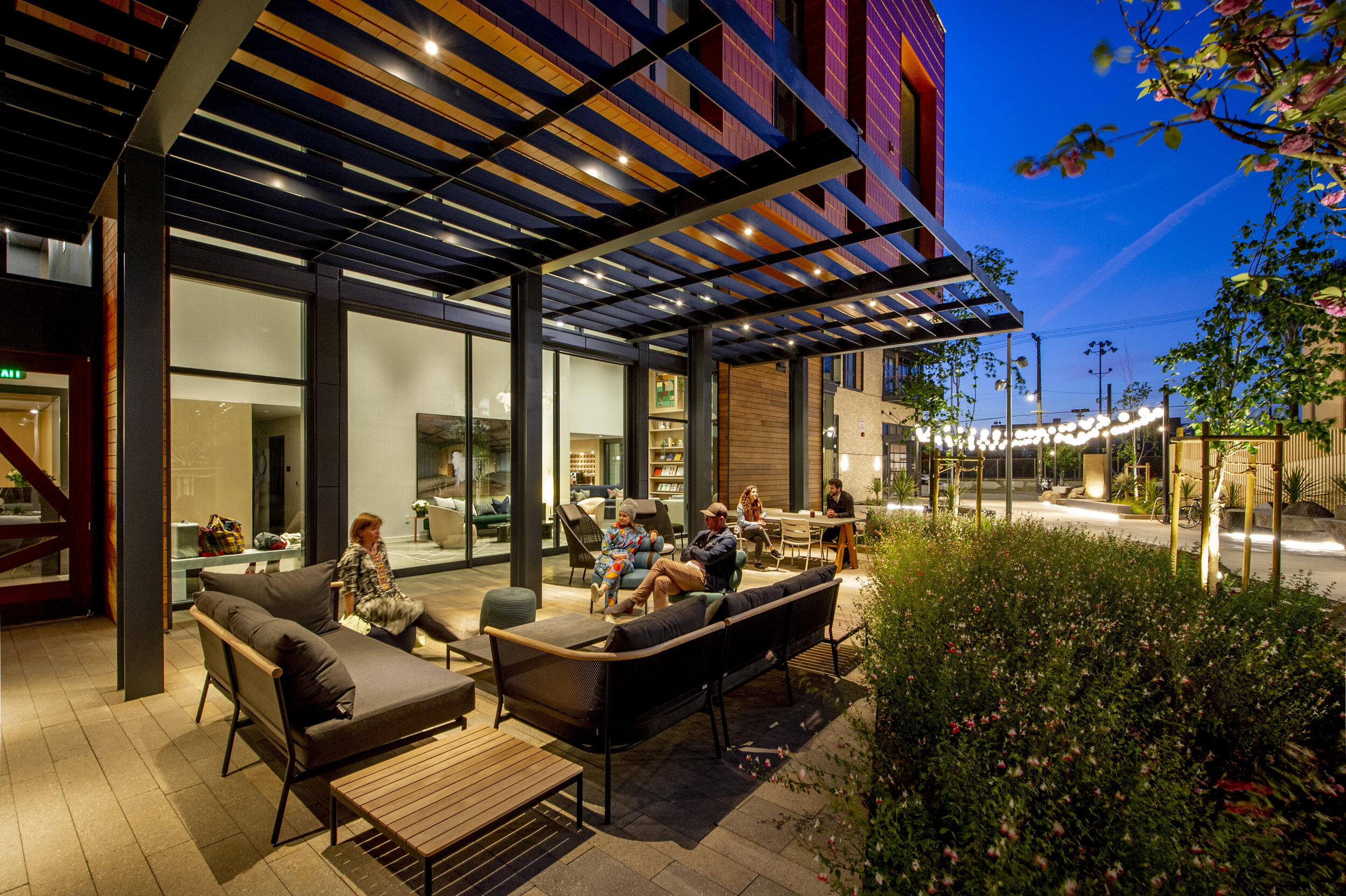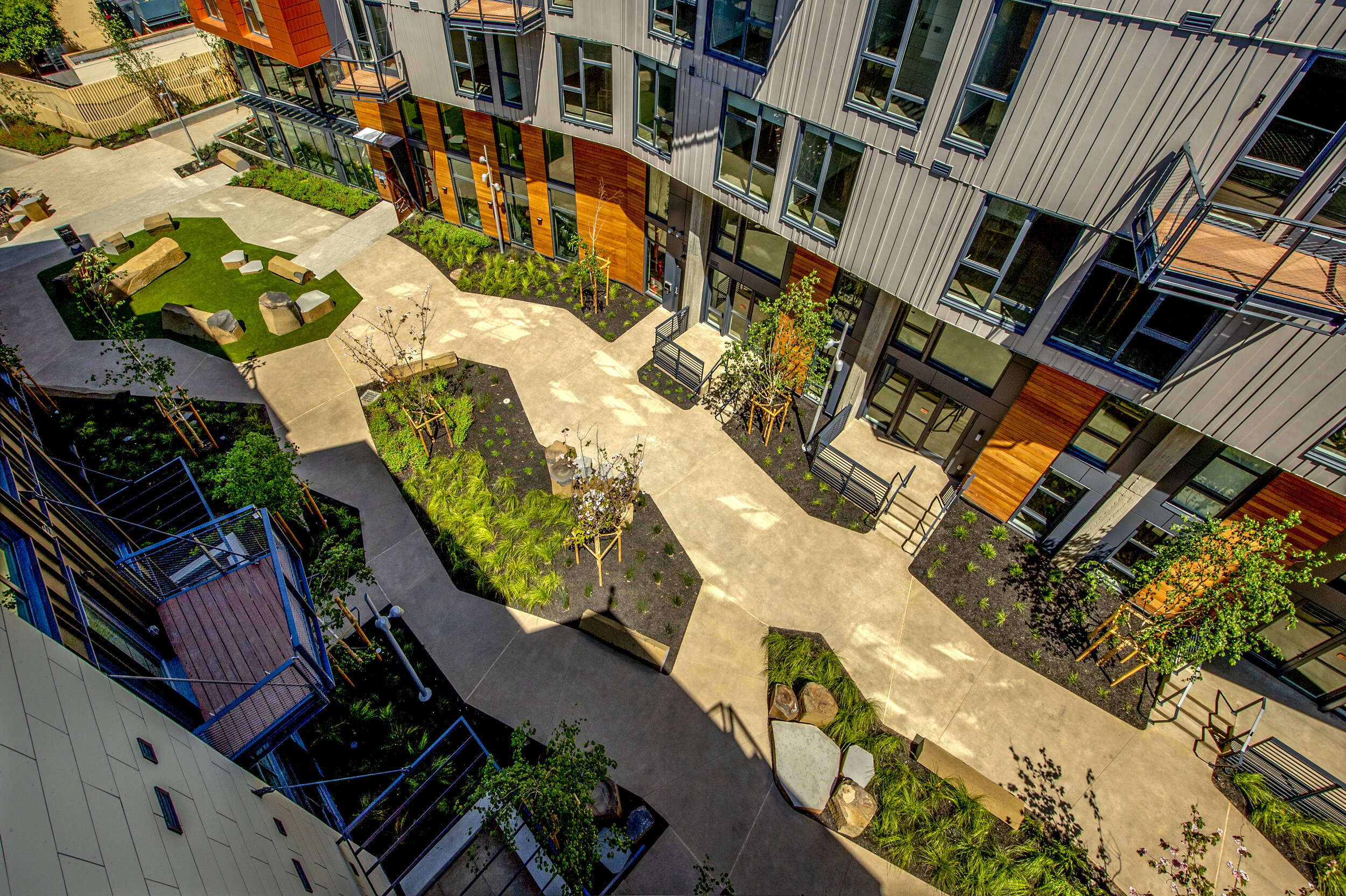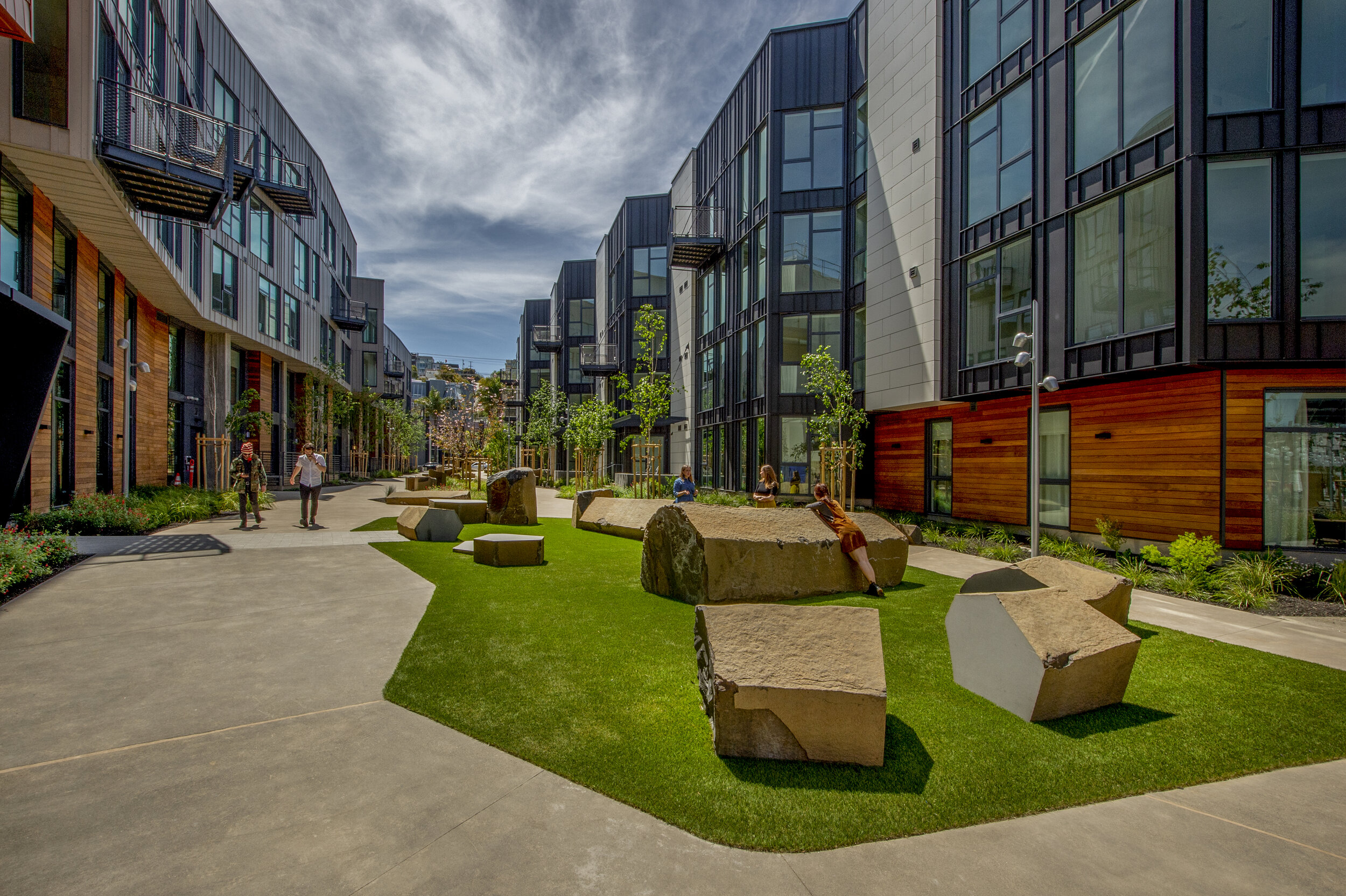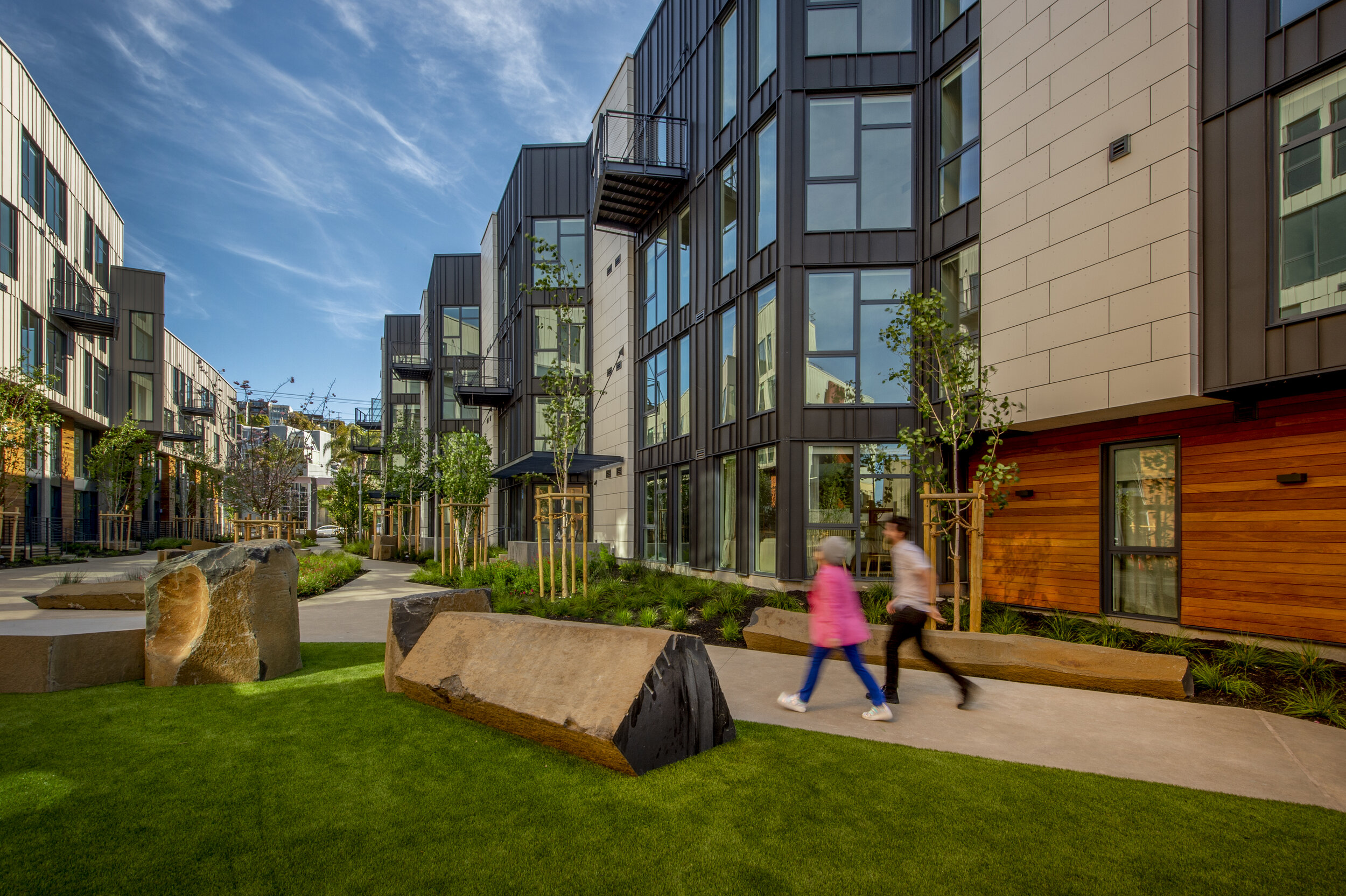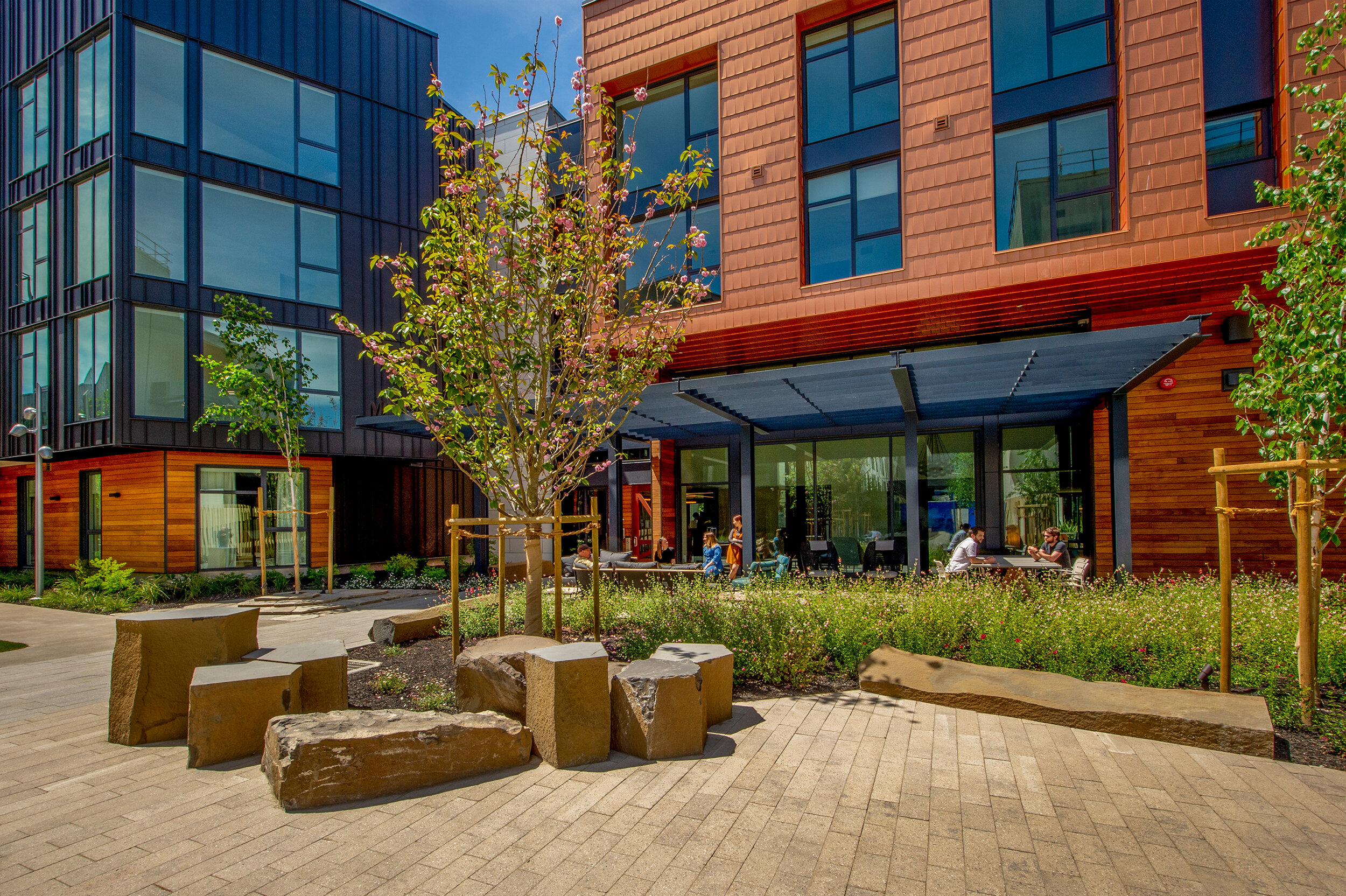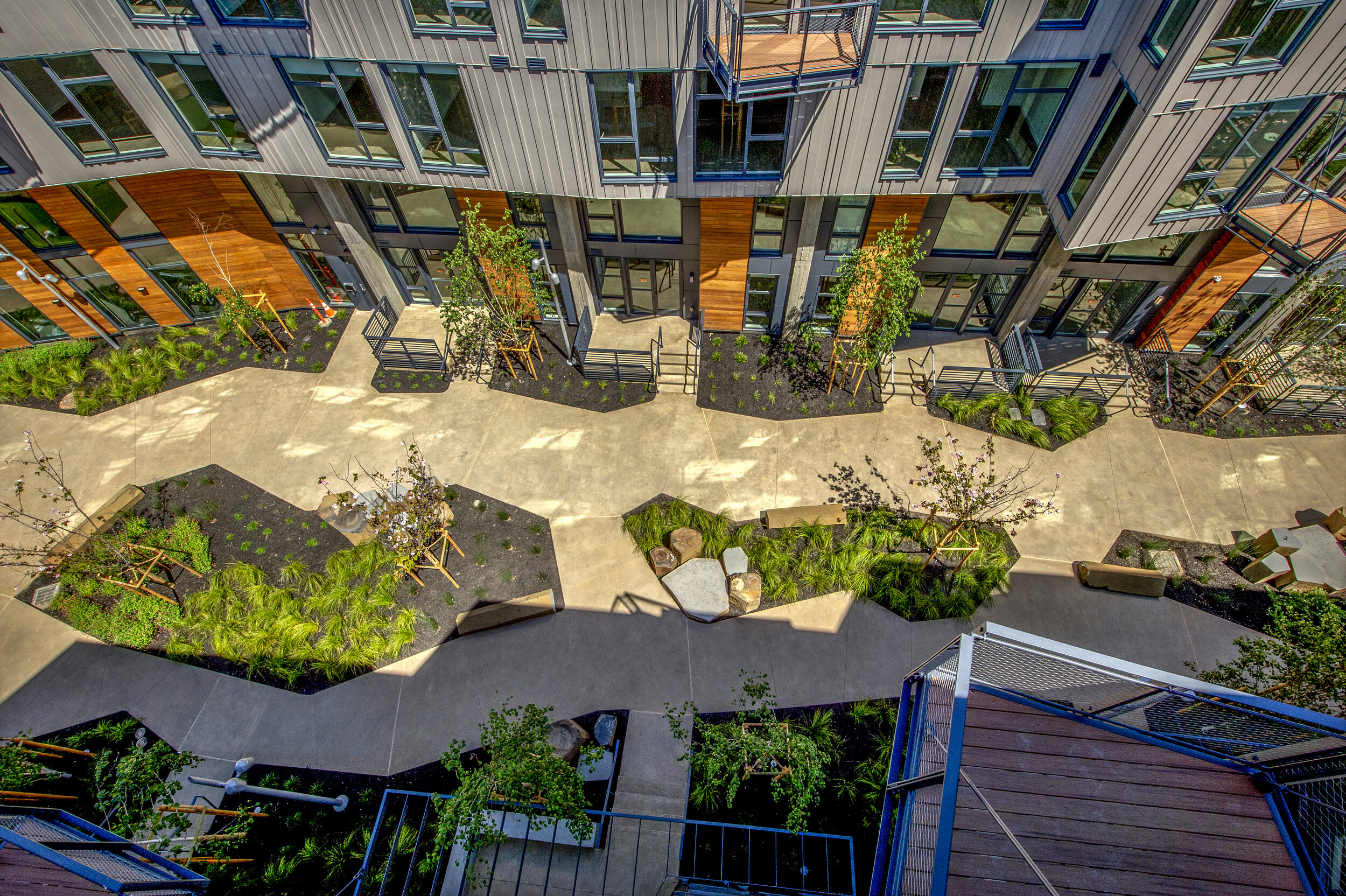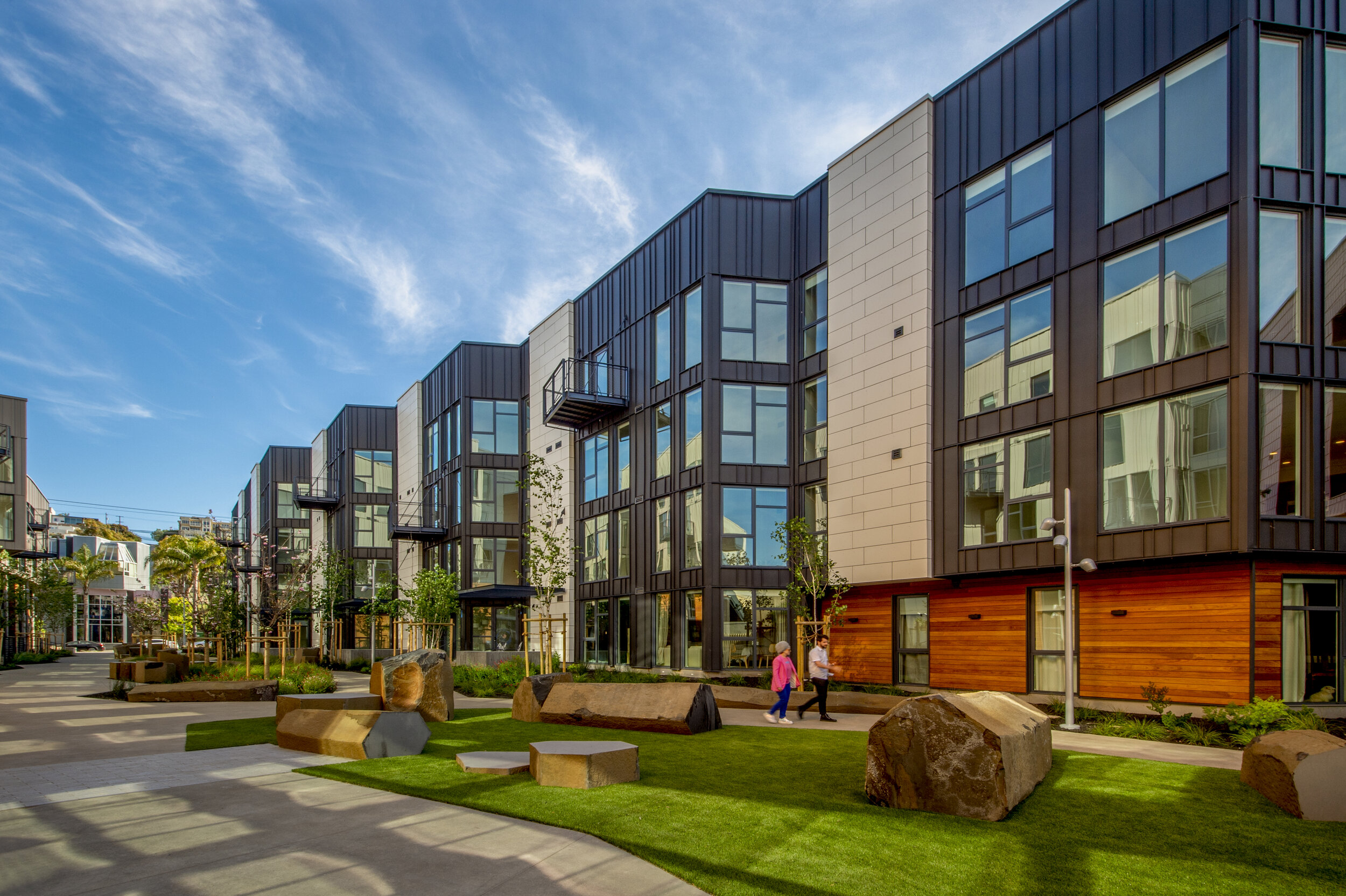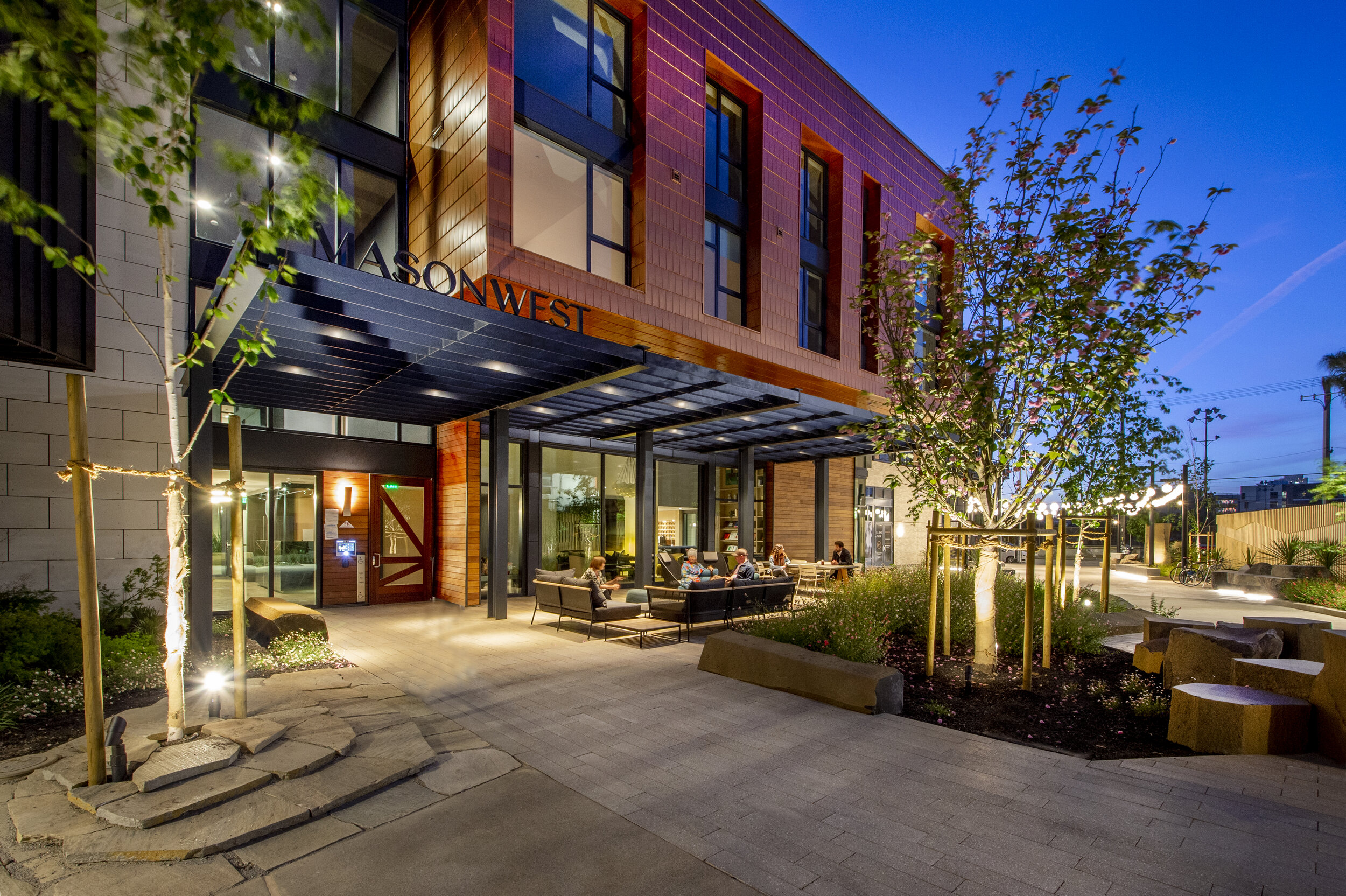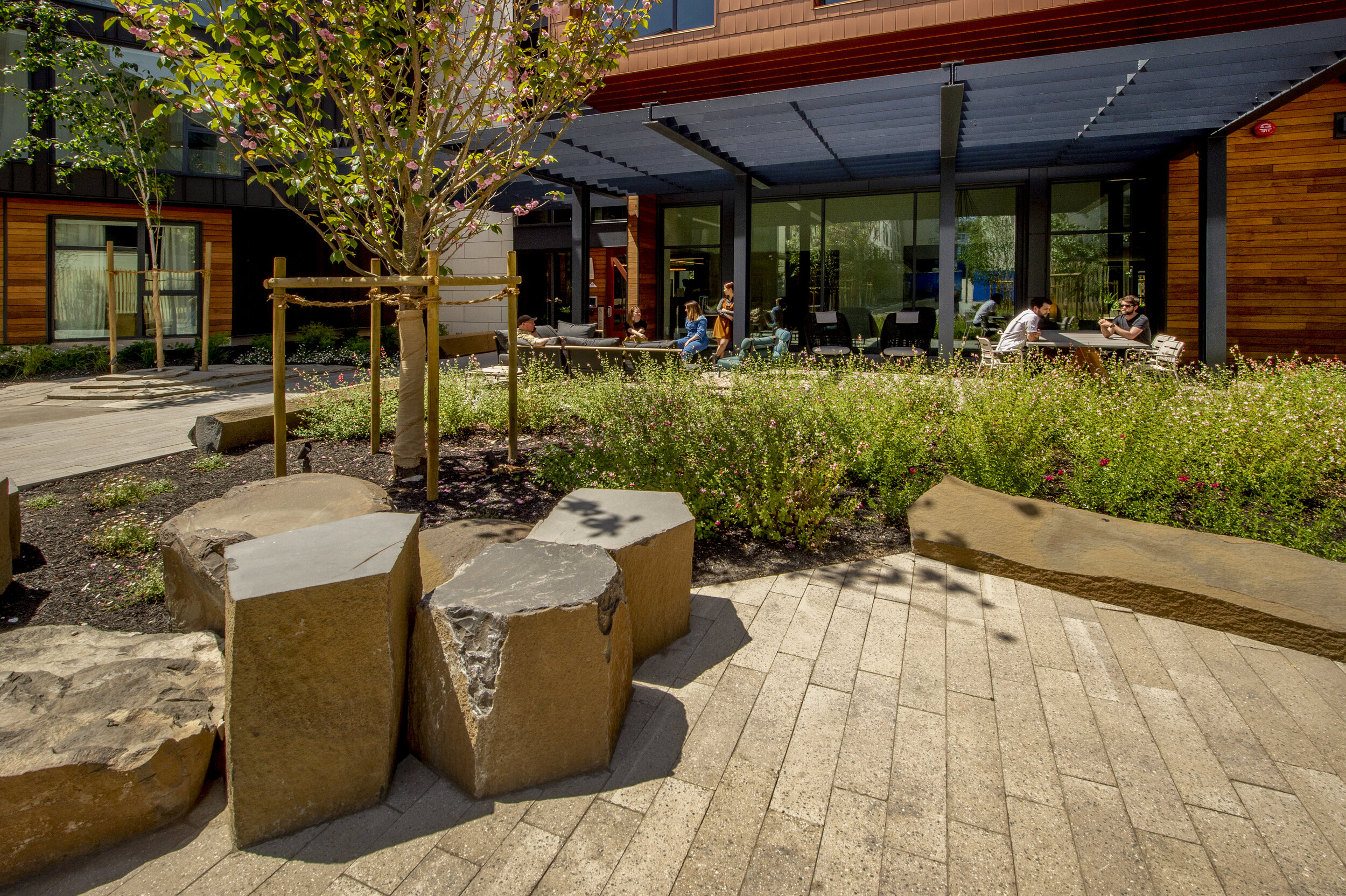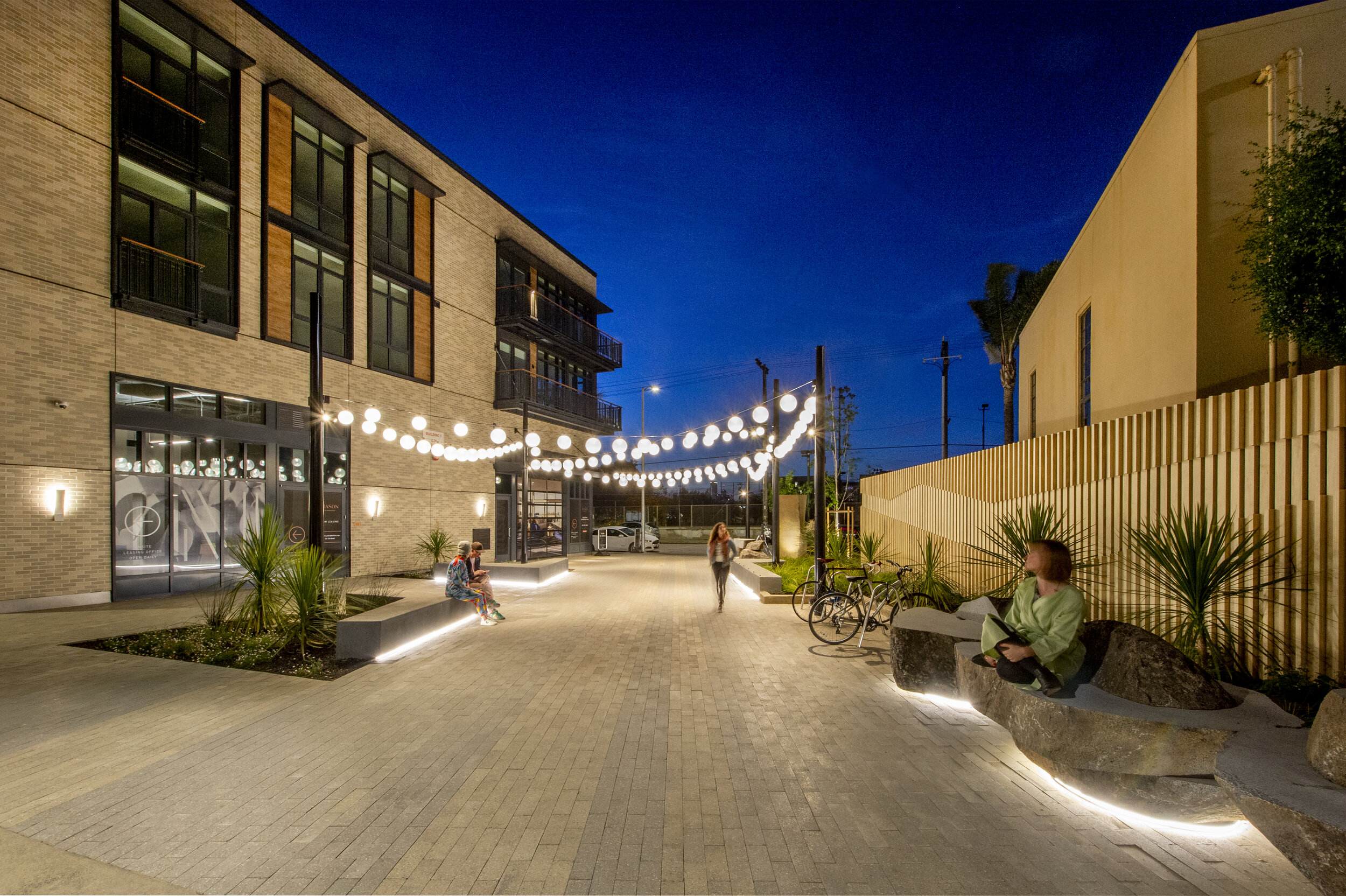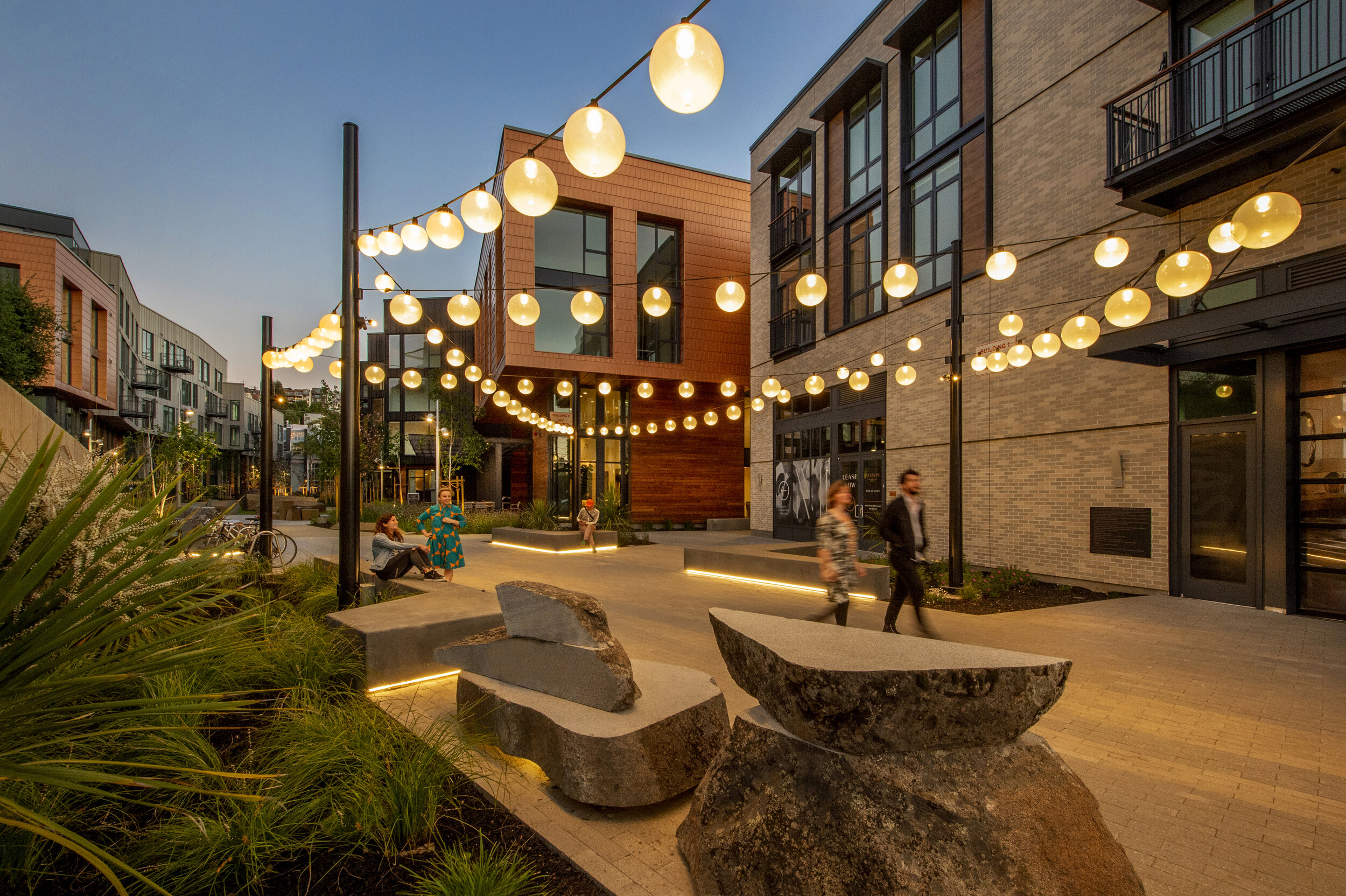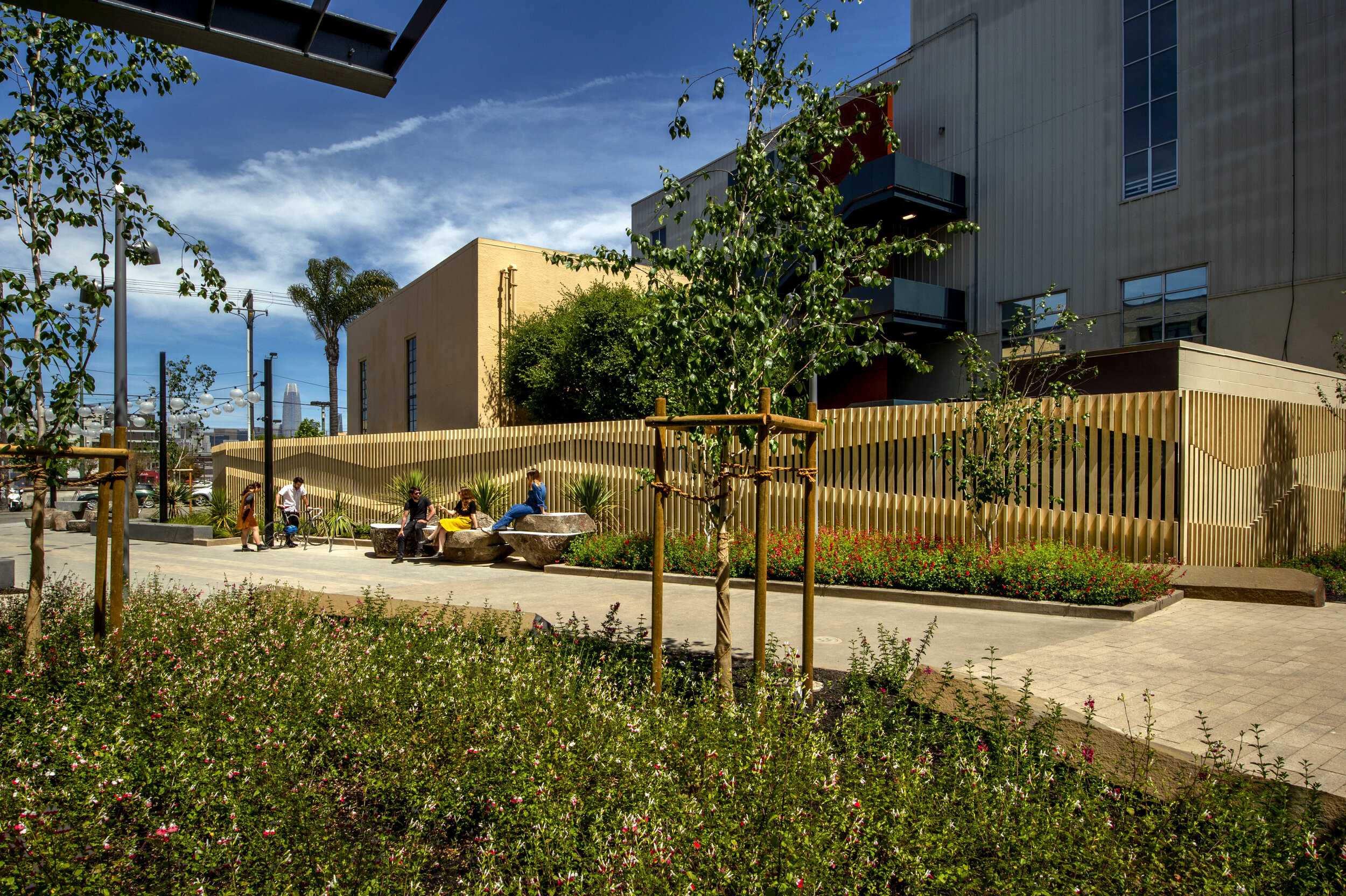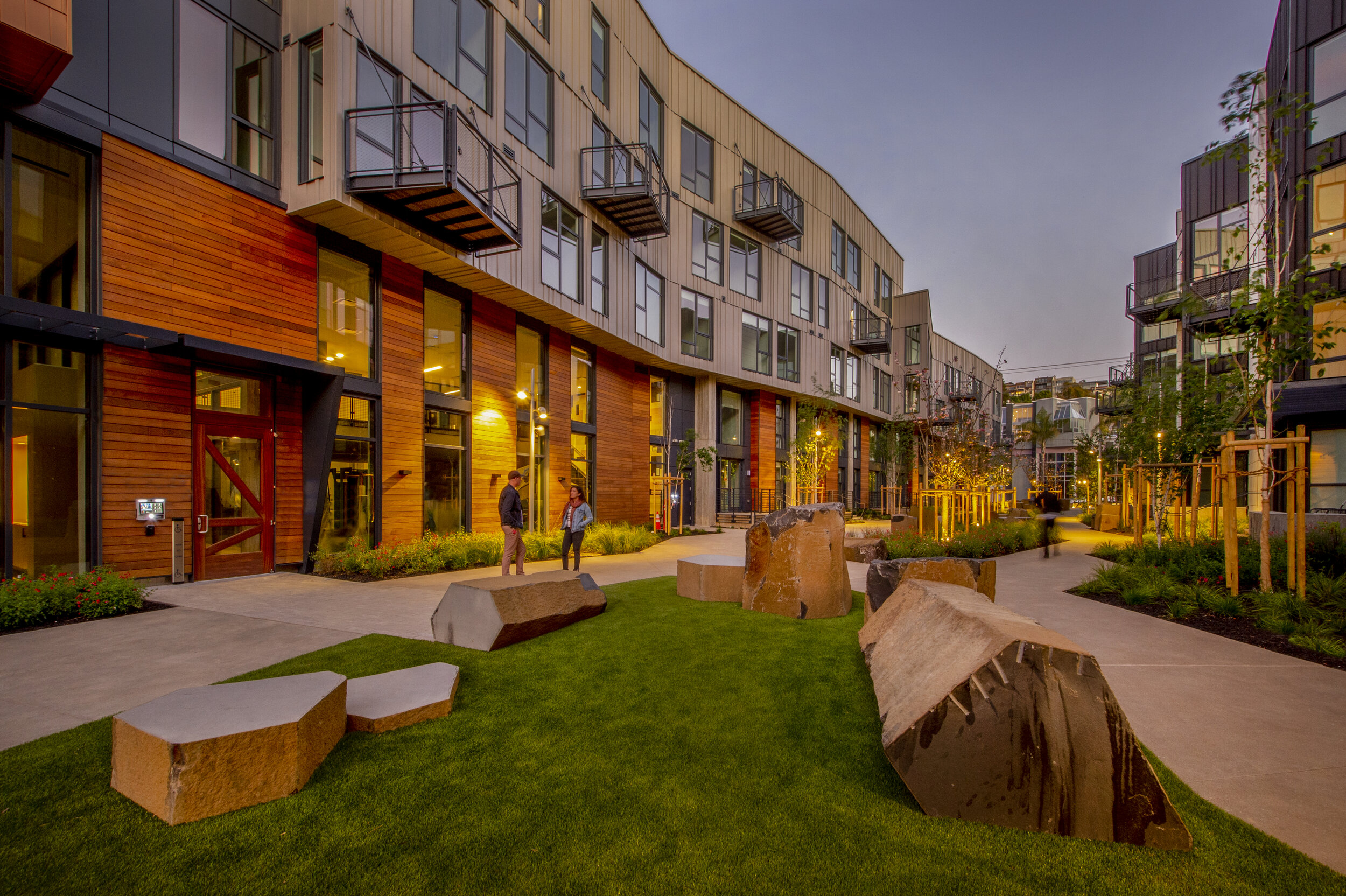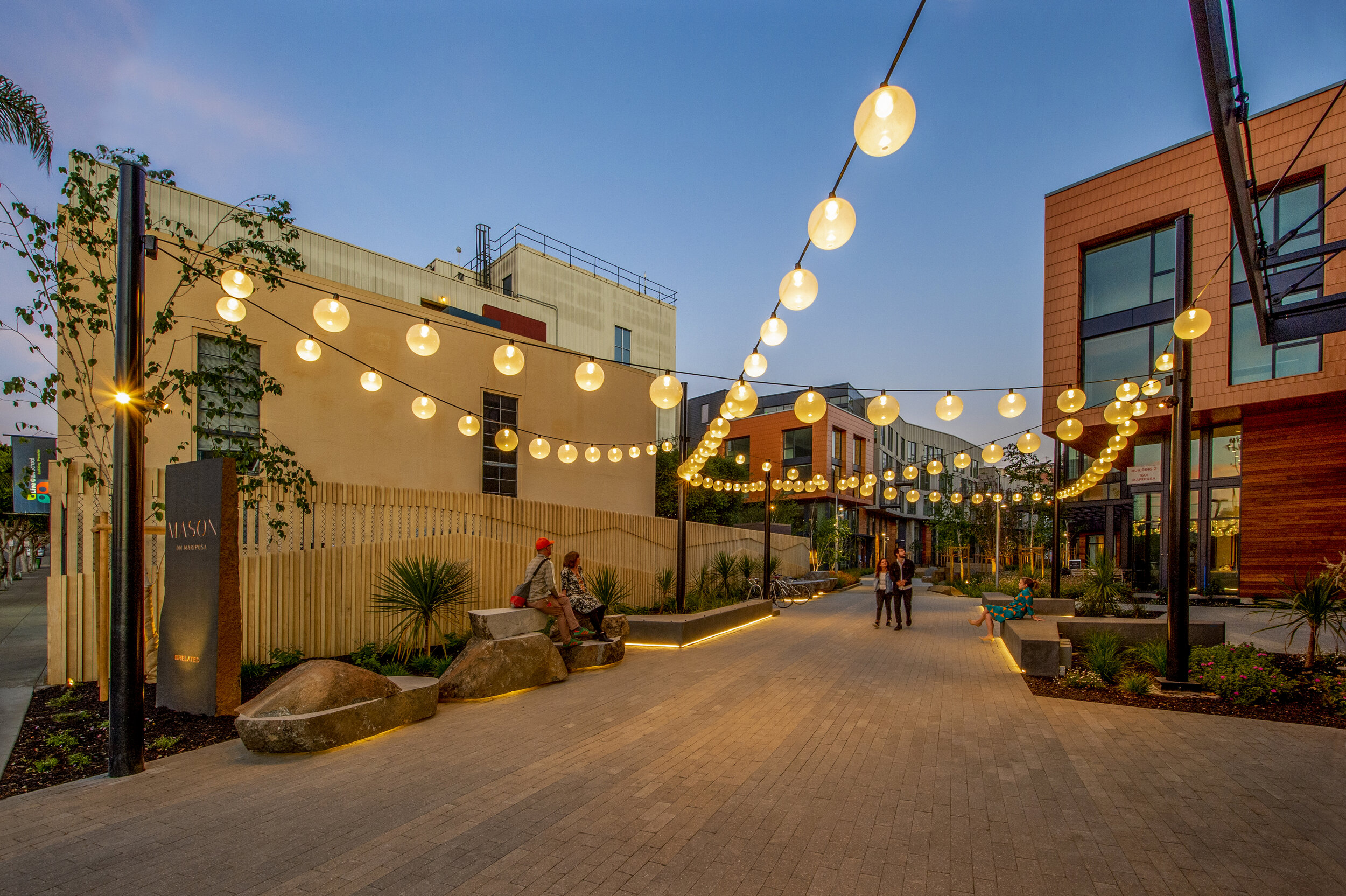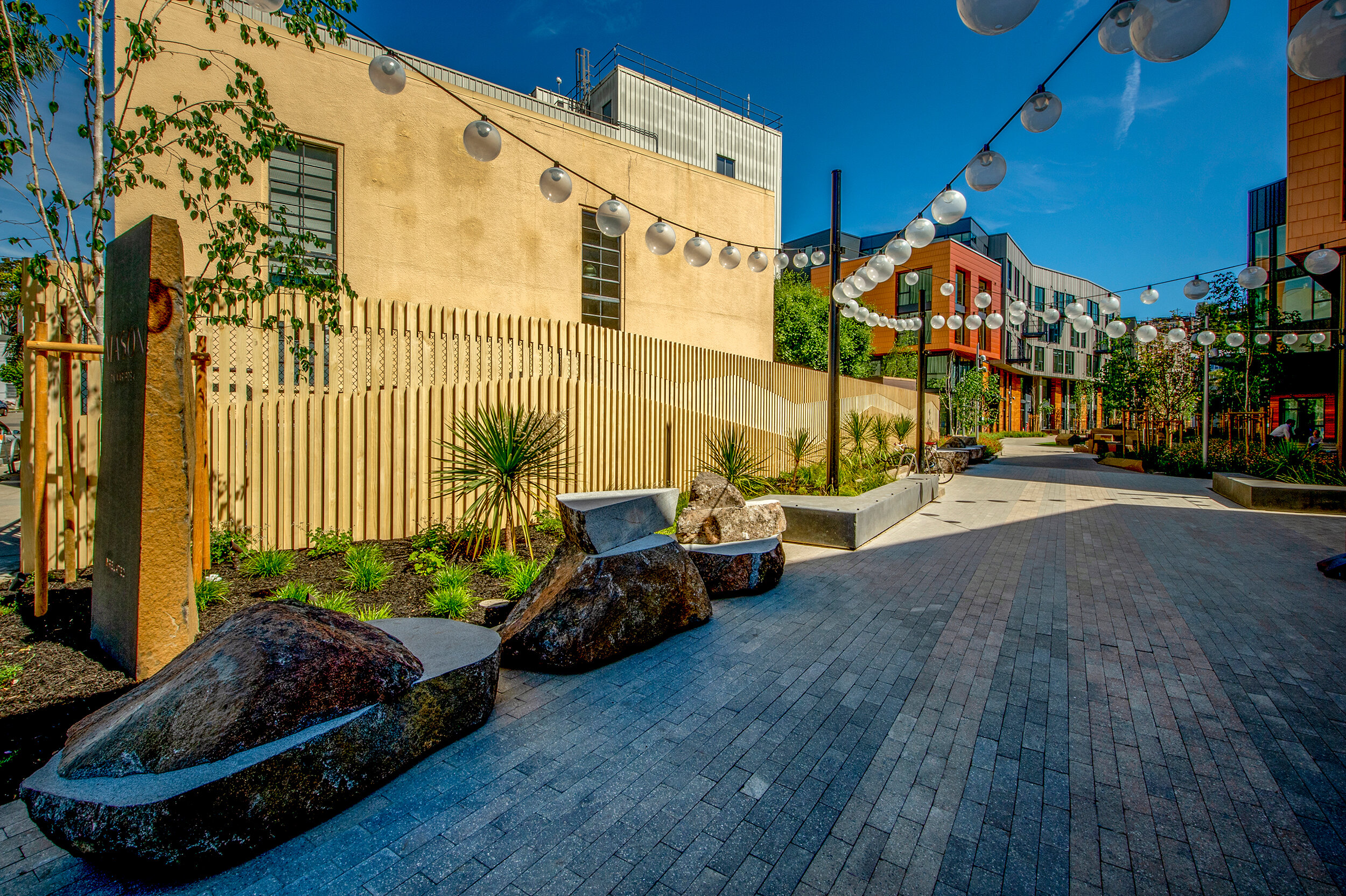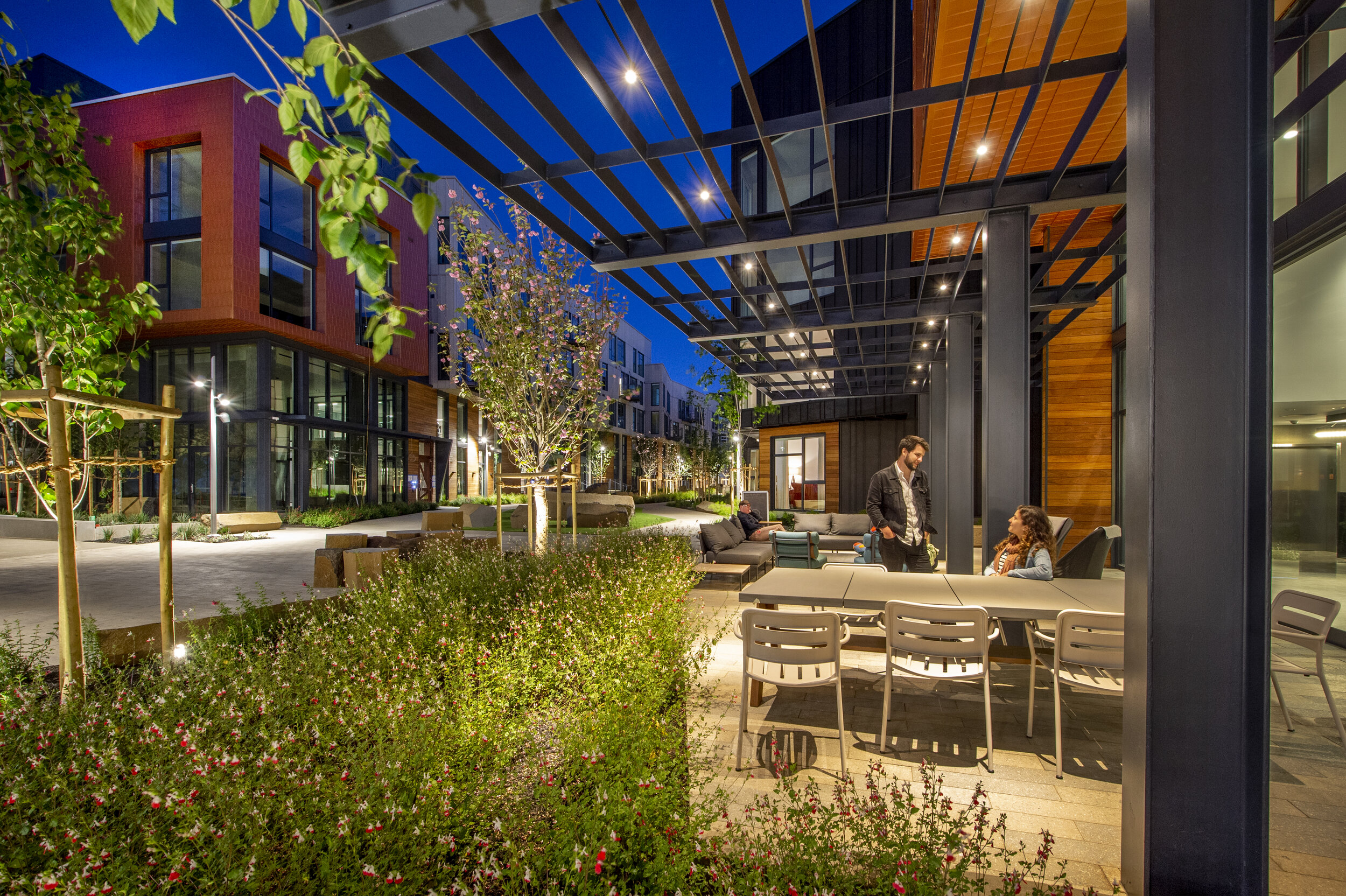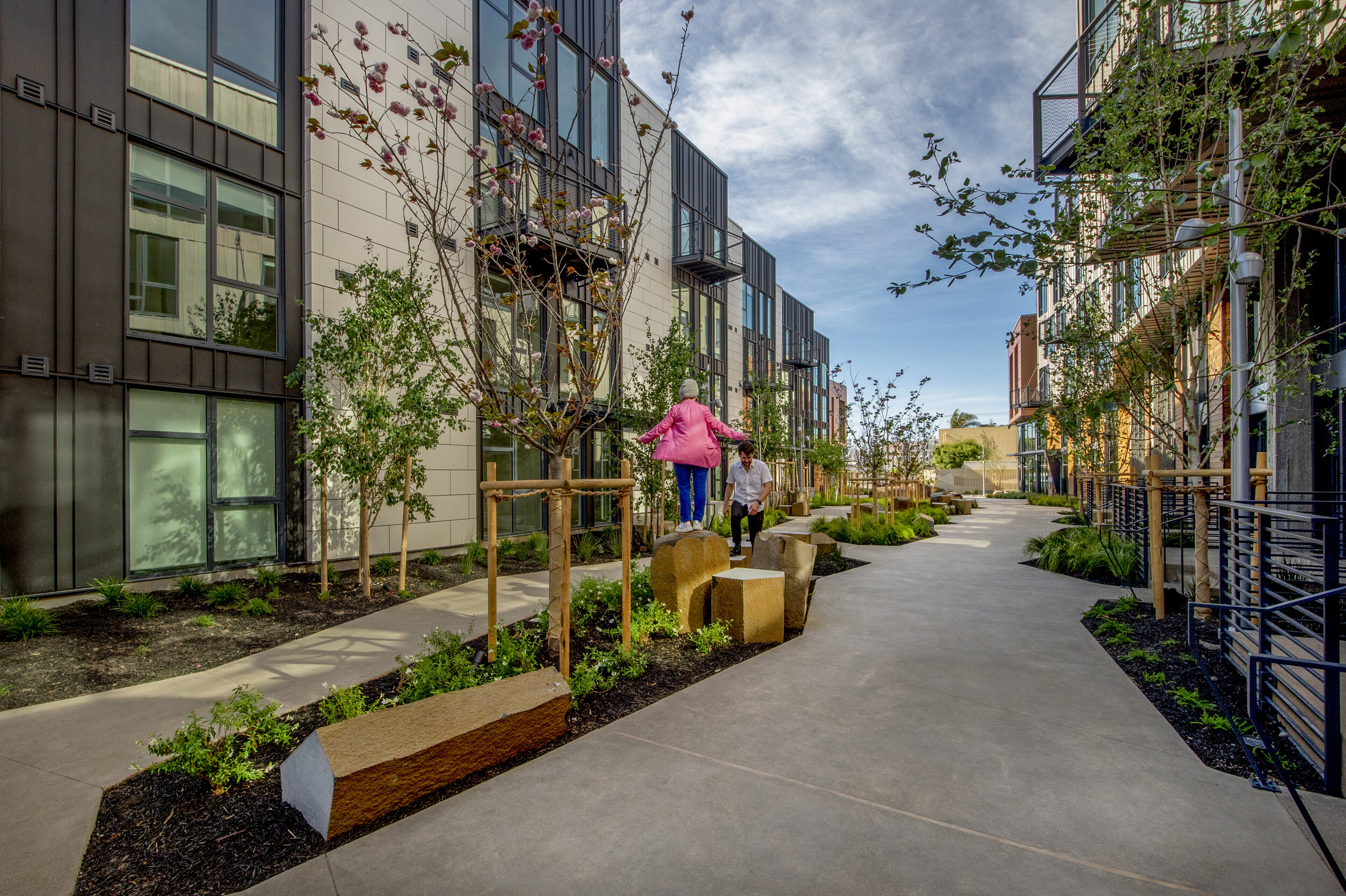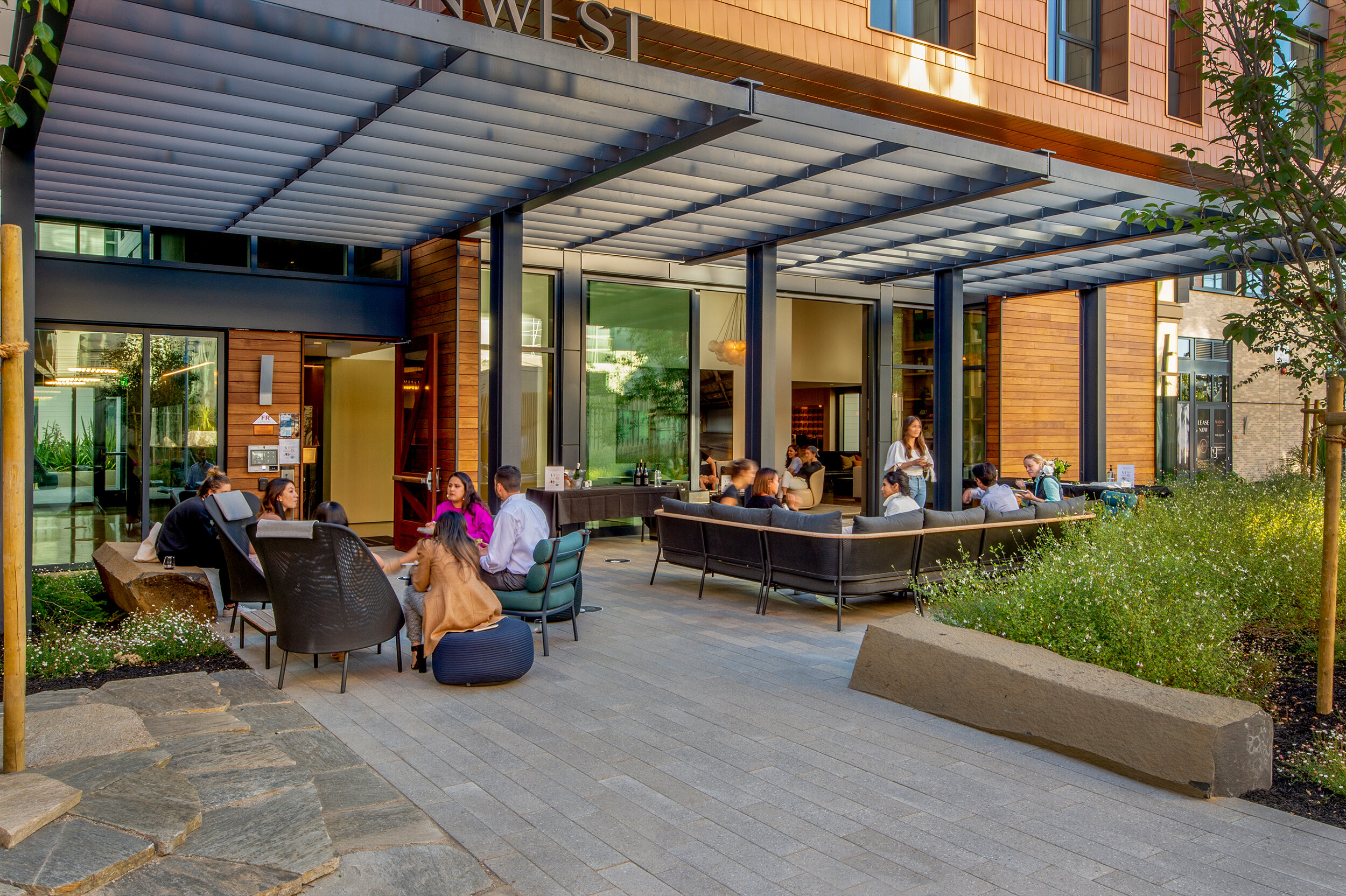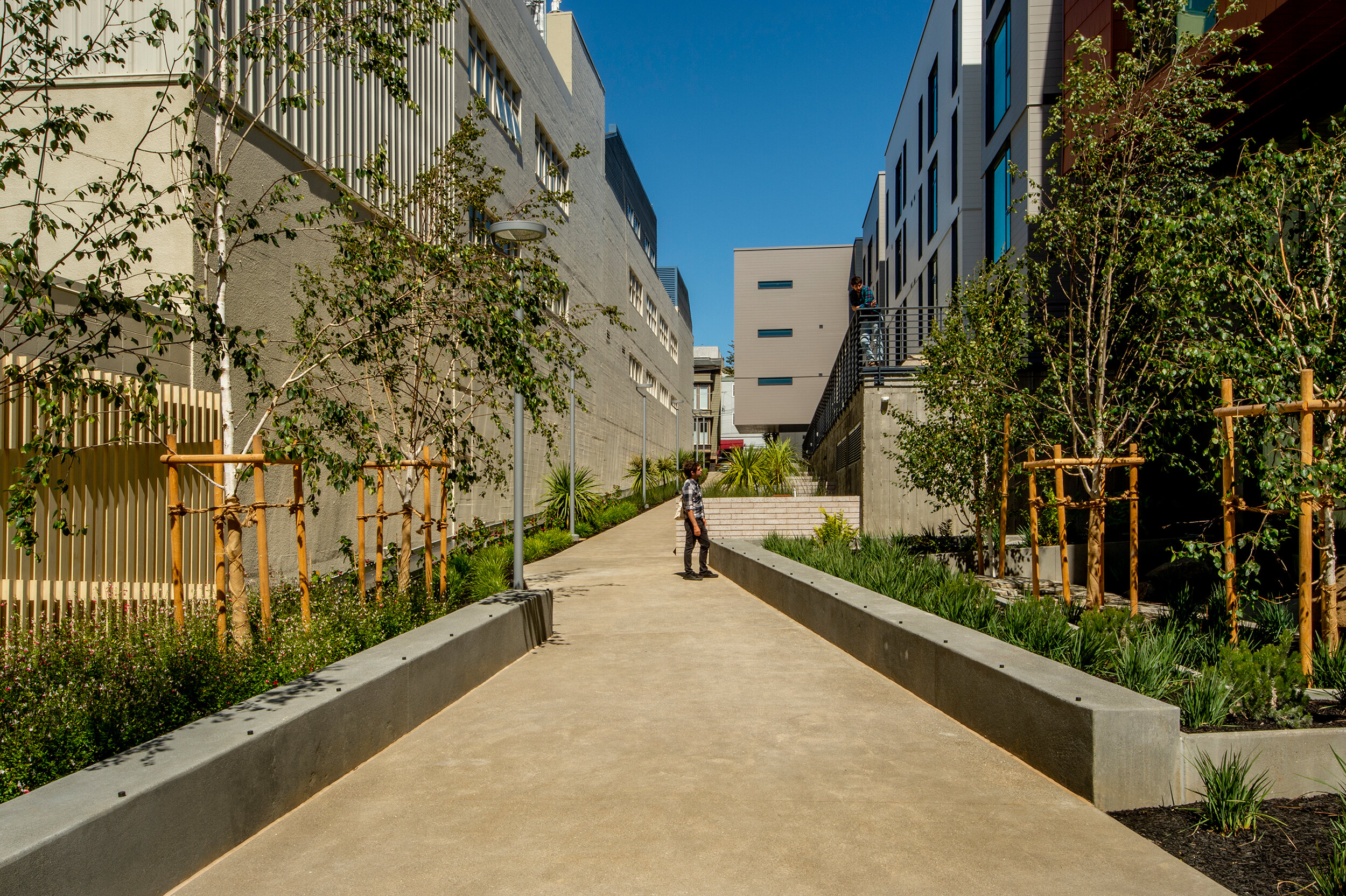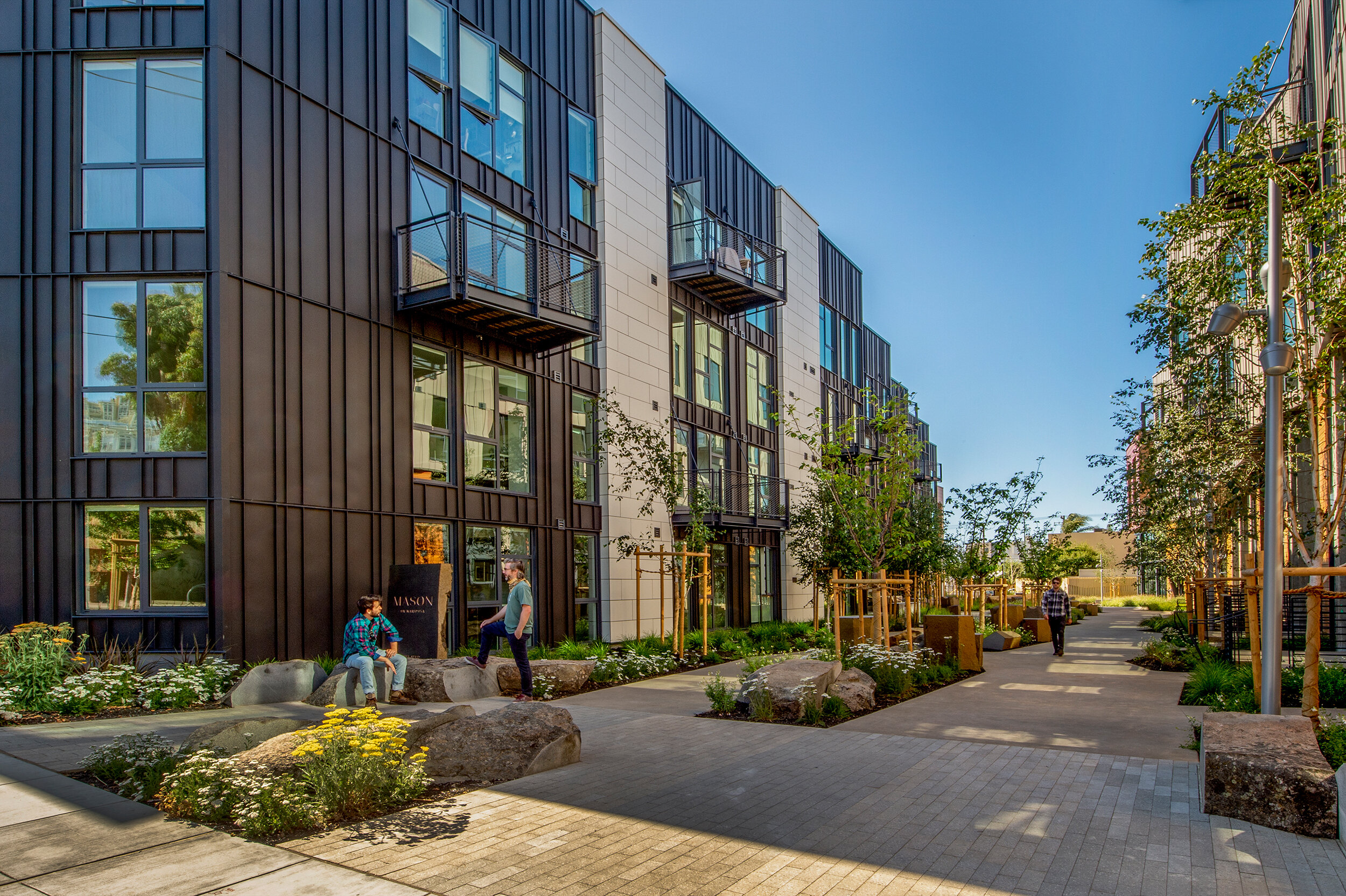
A greenway runs through it…
The Mariposa Greenway design is inspired by a creek, that was once located on the site, and still flows beneath it. A new public mid-block passage meanders and flows through a new mixed-use housing development, The Mason on Mariposa. Natural stone is found throughout, creating eddies and places to rest. Each plaza features a regional stone that has been dynamically cut and reconfigured to create a form of natural sculpture. This passage includes a series of “social eddies” and confluences, plazas and spaces that support a range of activities. Fletcher Studio was asked to design the project spaces, amenities, ornamental fencing, project signage, and custom sculptural lighting elements.
The design for Mariposa is inspired by a creek that was once located on the site, and still flows beneath it. A new public mid-block passage meanders and flows through a mixed-use housing development, The Mason on Mariposa. This passage includes a series of “social eddies” and confluences, plazas and spaces that support a range of activities.
1601 Mariposa, San Francisco
Neighborhood: Potrero Hill
Date: 2020 Completed
Size: 3.75 acres
Client: Related California
Role: Landscape Architecture
Features: Comprehensive Design, Green Infrastructure, Courtyard Podium Design, Signage Design, Lighting Design, Roof Deck Design
WALKWAY FORM
The paseo walkway borrows its form from a creek that used to flow above ground years ago. The creek, now underground, meanders through the site often colliding with the basalt stone. The space features a grand row of cherry trees, running down its spine, to add texture and seasonal color to the space. Two paths vary in size as they run from south to north, cutting back and forth between the trees, creating two independent path “tributaries”.
Social Deltas
The Mariposa Street and the 18th Street plazas, act as “spatial deltas”, and feature custom lighting and cut stone. At the intersection of the greenway and the east/ west Passage is the heart of the development. The logjam occurs in the heart of the paseo where two different tributaries come to a confluence. The continuous north-south flow is interrupted and scattered to create an opening. Several massive basalt columns fall over and break apart to create spaces for people to meet and gather.
Honest Materials
Natural Stone
Sustainable Woods
materials
Natural stone is found throughout, creating eddies and places to rest. Each plaza features a regional stone that has been dynamically cut and reconfigured to create a form of natural sculpture. Between the plazas basalt columns are stacked vertically and laid flat to create a variety of seating conditions.
Accoya Fence
Fence pattern was called 'mountain'. The idea picks up on Potrero Hill's obsession with the "The View" and providing a view even at the bottom of the hill. Accoya wood is Cradle to Cradle Gold Certified, acetylated pine.
Cut sonora Granite
Sourcing stone from the foothills of the Serrias to reconnect the urban environment to the idealized west. Dynamically cutting stone to provide an identity to each plaza. Uniquely placing the stone to make what is known, unknown again.
Cut Basalt
Washington Bronze Basalt was used in the paseo to symbolically represent log jams and ‘snags"‘ along the historic stream that now become a series of social spaces.
Monument Signs
Both monument signs were cleaved with a single cut from the same basalt column. Slightly battered, the monoliths stand guard overlooking either entry to the paseo.
Bio-Retention + Green Infrastructure
Flow-Through Planters: Harvesting rainwater from the entire roof, courtyard, and private patios the flow-through planter combines eleven different outfalls into a single movement of green infrastructure. Six different cells within the planter perform independently to slow down rainwater and hold it onsite.
Rainwater from the rooftop and patios are poured into the bioretention planters via carefully crafted scuppers. Energy dissipators slow down the flow of water to halt erosion within the planters themselves. A series of weirs retain water in each planter until a critical mass is reached. At that point the water flows down the planters, cell by cell. Overflow inlets within each cell act as a backup, transferring excess water to the city storm drain.
In this diagram, rainwater is transferred from the rooftop into the bioretention area below. Wall scuppers and cobble splash pads prevent erosion and provide a visual cue for moments of water movement. Excess water from the artificial turf and other planting areas drains toward the bioretention area.
lighting
Catenary Globes
Ethereal bubbles weave past each other warming the plaza. These are inspired by will-o'-the-wisps, the atmospheric lights that might have hovered above the adjacent historic marsh. The lighting is an a innovative new system called Exton and is manufactured by Tegan Lighting (contact: Associated Lighting Representatives).

Drawings
*The initial design for the park was developed through an iterative analog diagramming and design process. Intuitive understanding of the site, public feedback, and embedded rule sets guided design decisions. The design team then used cutting-edge parametric design software to aid in the production of working 3D models, technical specs, and construction documents.
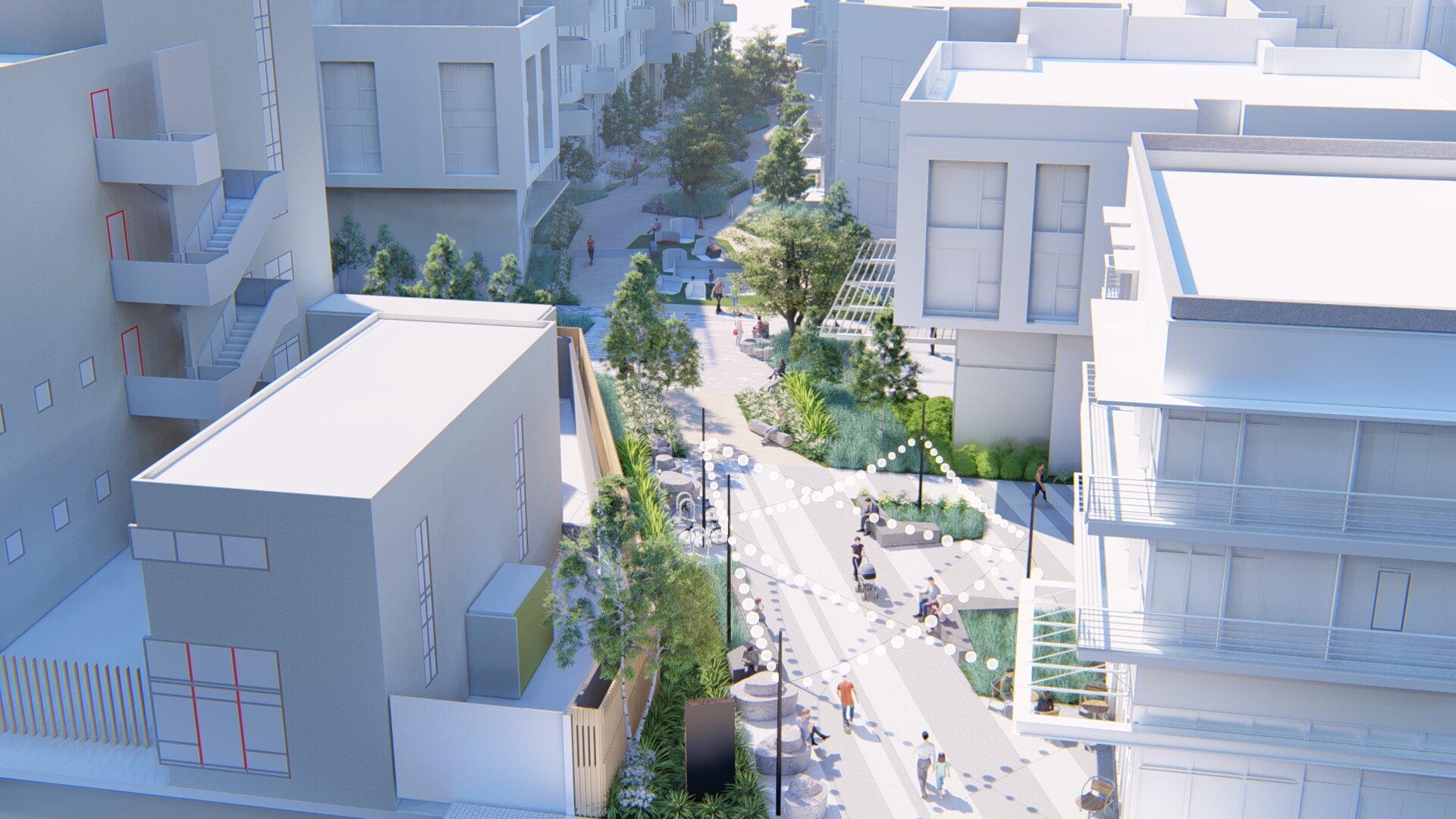
CONSTRUCTION
*The park took a year to build. During that time, we were onsite every single day that the crews were there. We formed an alliance with the construction crews that resulted in a highly collaborative work process. The site concrete was mixed on-site with a mobile batch plant. This allowed for a stronger and more aesthetically consistent hardscape.


